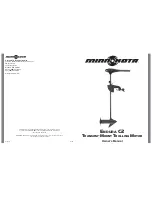
1
ISL97671A, ISL97672A Evaluation Board Quick Start
Guide
Description
This quick start guide pertains to the ISL97671A, ISL97672A
Evaluation Board Rev A-1 (Oct 2011). This board comes
populated with 78 LED’s in 6P13S configuration to simplify
evaluation and testing. In the case of the ISL97671A
evaluation board, please install the Sunlight ISL97670 GUI,
which will be used to control these parts via I
2
C. Please note
that the slave address on the ISL97671A is hexadecimal 58;
see Figure 1. Please refer to respective the ISL97671A or
ISL97672A section for jumper settings and power up
instructions.
ISL97671A
1. ISL97671A LED strings can be configured in 6P13S,
6P12S, 6P11S, and 6P10S with different LED jumper
settings, as shown in Table 1.
2. Connect WR, JP_OUTPUT, and JPCH0-JPCH5. Leave JP1
open to use external fault protection FET (Q1).
3. For current LED configuration, connect jumper JP1A to the
left and connect the power supply on J99 (IC_VIN) to deliver
VIN to the IC. When there is less LED in each string and
VOUT is lower than 28V, IC_VIN can be configured as the
bootstrap generated from the boost output by connecting
the jumper JP1A to the right
4. IC Enable is shorted to VIN by connecting jumper JP2A to
the right, thereby shorting jumper JP2A to the left so that
the EN is driven by J98(EN)
5. VLOGIC level for I
2
C can be generated from VDC by
connecting jumper JP3A to the right. VLOGIC can be driven
from J97 (VLOGIC) by shorting jumper JP3A to the left.
6. The configuration of VIN (JP1A), EN (JP2A), and VLOGIC
(JP3A) can be quickly found by referring to the table printed
on the evaluation board, as shown in Figure 3.
7. There are 4 different operation modes for ISL97671A. The
setting for each mode is shown on the other table printed
on the evaluation board, as shown in Figure 3.
8. For I
2
C/SMBUS and DPST mode, connect the I
2
C interface
board to the ISL97671A evaluation board, as shown in
Figure 2.
9. For I
2
C/SMBUS and DPST mode, in order to enable the
board, write a hex 58 for Slave Address and write a hex 05
in register 01; writing a hex 01 in register 01 will enable
DPST (see data sheet for more details); writing a hex 03 in
register 01 will allow PWM dimming only.
FIGURE 1. EXAMPLE OF GUI INTERFACE
CAUTION: These devices are sensitive to electrostatic discharge; follow proper IC Handling Procedures.
1-888-INTERSIL or 1-888-468-3774
|
Intersil (and design) is a trademark owned by Intersil Corporation or one of its subsidiaries.
Copyright Intersil Americas Inc. 2012. All Rights Reserved
All other trademarks mentioned are the property of their respective owners.
June 13, 2012
AN1634.1
Application Note 1634

























